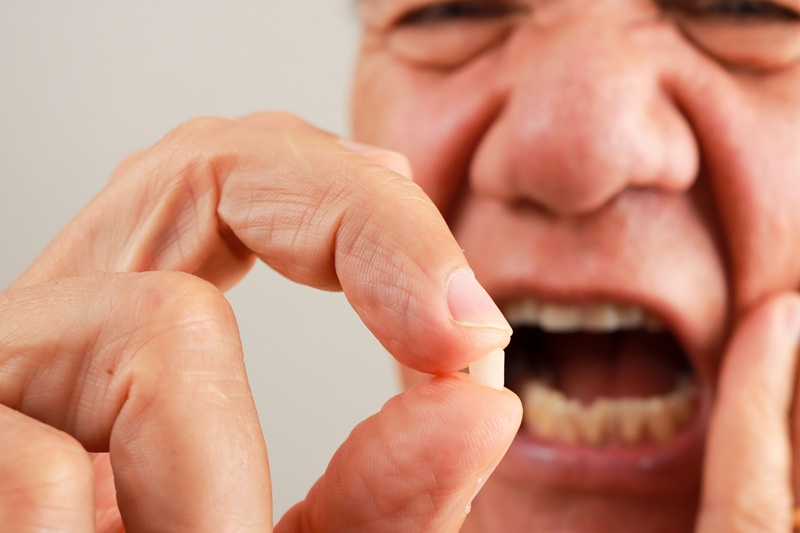Emergency Steps to Take When You Break a Tooth

Breaking a tooth can be a scary experience, whether it happens suddenly from an accident or unexpectedly while eating dinner. In these moments, it’s natural to panic and wonder, “Is breaking a tooth an emergency?” and “What can be done when a tooth breaks?”
This blog will guide you through what to do straight away, why teeth break, what to expect at the dentist, and how to prevent future damage.
What Happens When a Tooth Breaks?
When a tooth breaks, it means that part of your tooth structure, either the enamel (outer surface), the dentin (middle layer), or sometimes even the inner pulp (nerve) has been damaged or at least compromised. If that happens, this can lead to:
- Sharp or rough edges that can cut your tongue or cheek
- Pain when chewing or drinking hot/cold liquids
- Sensitivity or throbbing if the nerve is exposed
- Risk of further cracking or infection
Understanding what happens and knowing the emergency steps when a tooth breaks helps you respond calmly and act quickly.
Why Does a Tooth Break Off?
Our teeth are strong. However, they are actually not as strong and sturdy as you think they are because they can still crack, chip, or even snap under certain conditions. Here are the main reasons why a tooth might break off:
1. Trauma or Accidents
A blow to the face, falling over, or being hit during sports can cause a tooth to snap or chip. This is one of the most common causes of front tooth breakage.
2. Biting Down on Hard Foods
Sometimes, it’s not even something that feels that hard like biting into bread with a hidden olive pit, or a piece of hard candy.
3. Weakening from Fillings or Decay
Teeth that have had multiple fillings or untreated decay become structurally weaker over time because of all the multiple drillings that have been done. In these cases, even gentle chewing can cause them to be weakened or hurt you.
Is Breaking a Tooth an Emergency?
Yes, in most cases, breaking a tooth is considered a dental emergency, especially if you are in pain, there has been bleeding, a nerve might be exposed, swelling or some signs of infection.
Even if the break seems small or painless, it’s still important to contact your dentist as soon as possible because delaying treatment can lead to further damage or complications.
What to Do Immediately After a Tooth Breaks
We understand that facing a dental emergency can be an overwhelming experience, especially when you do not know what to do. Now that you are in this blog, it’s better to learn about the emergency steps when handling dental accidents.
Here are some of the steps you can take when you’re faced with a broken tooth:
Step 1: Stay Calm
As with any kind of emergency, remember to stay calm and take a deep breath. A broken tooth can usually be treated successfully, especially if you know what to do and you act quickly.
Step 2: Find and Save the Broken Piece (If Possible)
If you were in an accident or bit into something hard and a part of the tooth is broken, look for the broken piece of the tooth. Place it in a clean container with milk or saline (saltwater) to preserve it until you can see a dentist. If the tooth is intact, sometimes your dentist can bond it back.
If the break happened while eating and you cannot find the piece anymore, don’t worry. In those cases, your dentist may recommend a possible way to restore your teeth back to its shape.
Step 3: Rinse Your Mouth
Use warm water to gently rinse your mouth. Avoid brushing the area too hard or using alcohol-based mouthwash.
Step 4: Call Your Dentist Immediately
Do not wait for your emergency to get worse. Whether or not you’re in pain, your dentist needs to assess the damage as soon as possible to catch any injury to the nerve or bone underneath the tooth.
What Can Be Done When a Tooth Breaks?
At the dental clinic, your dentist will examine the tooth and recommend treatment based on the size and location of the break, and whether the tooth structure is still healthy.
Here are some of the options we offer our patients at Whitehorse Dental whenever they get a broken tooth:
- Bonding the Broken Piece: If the fragment is still intact and the tooth is otherwise healthy, we may be able to glue the piece back on using dental bonding.
- Filling or Composite Build-Up: If the broken part is small or the original piece is lost, the dentist can restore the tooth using a tooth-coloured filling material.
- Crown: For back teeth, especially molars that have had multiple fillings, breakage is more common. If the tooth is mostly filling or badly weakened, a porcelain crown may be recommended to protect and strengthen it for the long term.
- Root Canal (if the nerve is affected): If the break has already reached the pulp (the nerve inside), your dentists may have to perform a root canal treatment to remove the damaged nerve and seal the tooth.
Be Always Prepared
A broken tooth can catch you off guard, but with the right knowledge, clear mind and quick response, you will be able to help yourself restore your smile. Whether your tooth snapped during a meal or took a hit in an accident, knowing what to do next is helpful for your well-being.
That’s why acting fast and seeing your dentist promptly can prevent the problem from getting worse and help save your tooth.
When you’re in or around Blackburn, VIC and you’re faced with a dental emergency, our qualified and experienced dentists have got your back. Our team will assess the damage and guide you through the best treatment for your injury.
If you have a dental emergency, call our clinic right away at (03) 8838 8820 to restore your smile and keep your mind at peace.


